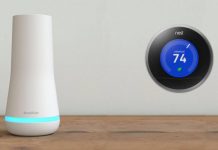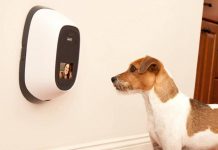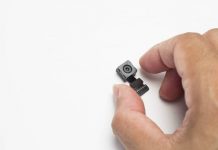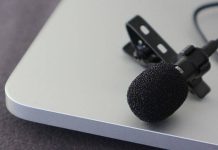UPDATED December 11, 2021 This piece has been updated to reflect the emergence of new technology


Christian Mathews Security Writer
It’s possible that your activities at home may not go unnoticed. A stalker, a spouse, a neighbor, or even your best friend may be watching you when you are unaware. Many people that have that concern may be asking “How can I sweep my house for listening devices?”, rightfully so.
Spies have a way to hide their presence in plain sight. They can camouflage anything to blend in with the environment. That makes it very hard for you to know whether you are under surveillance. What appears like a screw on your electric switch cover could be a listening device or a pinhole camera.
If you have a feeling that someone is eavesdropping on you, then it’s time for you to perform a technical surveillance countermeasures (TSCM) inspection. In other words, check for bugs.
I know what you are thinking; do I need to hire professional bug sweeping services? If not, how can I sweep my house for listening devices?
This article aims to help anyone who suspects that they have been bugged. We will show you what to look for. Additionally, the steps that you need to take to properly sweep your house for spy devices.
1Types of devices to look for
Today’s consumer surveillance devices are tinier, smarter, less costly, and they are very easy to hide. However, a lot of bugging devices are detectable provided that you know what to look for.
There are several types of bugs and eavesdropping devices and they can be planted anywhere in the house: kitchen, bedroom, behind the lamp, under the flower vase, or even in your stylish wall clock.
When conducting a bug sweep, here are common devices that you should be looking for:
- Wireless streaming devices
- Room transmitters
- Laser listening devices
- Any audio equipment that can record and process sound
- Wiretaps for phone lines
- GSM bugs
- RF, VHF, and UHF radio transmitters
2Simple Steps to Properly Detect Bugs
As mentioned above, spy devices are so small they can be hidden anywhere in the house. Yet, despite their sizes, you can still conceal these miniature spy cameras.
The fact that most cameras – however small – have visible lenses makes them quite easy to detect. Since almost all spy gear makes some faint buzz when they are running, this can give away their location if you listen carefully.
However, if you want to conduct a comprehensive bug sweep in your house, below is a step-by-step guide to help you detect bugs within minutes.
Conduct a physical search
A simple physical inspection is something that anyone can do. If done right, an intensive search could be quite helpful in detecting any hidden bugs.
You can start by checking out places where it is possible to find indoor hidden cameras. Some common places to begin with include:
- Wall sockets
- In the books
- Electric outlets
- Wardrobes
- Tissue boxes
- Tabletops, couch cushions, shelves
- DVD cases
- Digital TV boxes
- Inside clocks, smoke detectors, and light fixtures
Also, extend your search to your home compound in spots where it’s possible to stash in outdoor cameras. Inspect places such as:
- The roof of your house
- House plants
- Your gate
During the sweep, be wary of objects that seem suspicious like installed wires, cables, or lenses. Also, look out for anything that seems odd, out of place, or disturbing. If you feel someone has tampered with your lights, the arrangement of your TV, etc, look for anything hidden beneath.
As you do this, scrutinize any cables, wires, or unusual power outlets.
Find a Hidden Night Vision Cameras With a Flashlight
This is another effective, low-cost method that can help spot surveillance electronic equipment. Most spy cameras have LED light indicators that tend to shine or blink in dark conditions.
Night Vision Camera Recorder
$65.99 in stock
3 used from $57.78
When using this method, you can wait until it’s dark and turn off the lights. You can also close your curtains to create a low-light environment. Then use a flashlight or a torch to scan the room for any blinking light. You can also turn on your smartphone’s flashlight which can also help you find the infrared light emitted by spy cameras.
Added tip: If you have a security camera, this is an easy method to check if it is on.
How to Use Your Phone to Detect a Hidden Microphone and Camera
There are two ways you can use your mobile phone to detect spy gadgets.
Way #1:
Place a call on speakerphone to one of your friends or someone who is close to you and request them to stay on the line. As they hold the phone, move about the house listening for any electrical interference.
If you hear buzzes or cracking sounds, this may indicate the presence of hidden surveillance devices.
Way #2:
The second way you can find spy microphones or cameras is by installing a hidden microphone detector app on your mobile phone. After launching the app on your phone there should be an indicator like a red glow when your phone detects hidden bugs.
Use a Radio Frequency (RF) Detector
Also quite popular are RF, or radiofrequency detectors which are used to scan for wireless spy devices. Their price range can start as low as $10 but the best models can cost thousands depending on their specs.
Just like metal detectors, radio frequency detectors often make a beep or a sound. It becomes louder as you get closer to a device transmitting radio frequencies. Advanced RFs are equipped with digital displays that not only give you the details of the radio signals but also a hint of where the signals are coming from.
Experts recommend you turn off or unplug all your devices, to avoid picking up signals from your electronics like the computer.
3What Are Some of the Signs That Your House Is Bugged
There are a few things that can tell you that someone is spying on you. Or possibly listening to your private conversations. Here are some signs that could help identify if you are a target of a spy:
- Someone close to you, such as a friend, a partner, or a neighbor, may accidentally disclose a piece of information that only you know about.
- If you are a celeb and you find some private information in the press or on social media, it could be a sign that someone is stalking your home.
- If someone broke into your house and nothing significant was stolen. Be very cautious and perform a bug sweep just in case they were planting surveillance devices.
4Final Thoughts
When asking yourself, “How can I sweep my house for listening devices?” or “how do I go about detecting listening devices & hidden cameras“, besides the above do-it-yourself steps for sweeping your house you can hire professional services to do a bug sweep for you. The majority of them range anywhere from $1,000 – $10,000 and above, depending on several factors, such as the size of your house, etc.
Whether you come across spy gear or not, always remember to do regular house sweeps and record results after every inspection.

















































